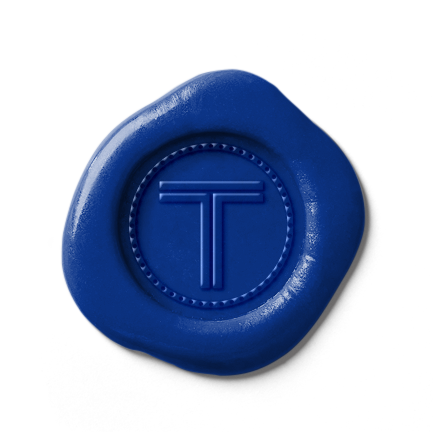A Closer Look At Wine Additives
Dry Farm Wines visits Natural Wine Grower Claus Preisenger’s wine cellar in Austria
Experts believe winemaking began in Northern China around 7000 B.C. Archaeologists, sifting through the ruins of an ancient civilization called Jiahu, uncovered grape seeds and pots lined with tartaric acid, the main acid in wine grapes[*].
Shortly after the origin of winemaking, wine additives made their way into history. In 4100 B.C., Persians started using pine resin to keep their wine from spoiling[*]. The ancient Greeks mixed their wine with perfumes, herbs, brines, and even seawater in attempts to improve flavor, and the ancient Romans were the first to add sulfites to wine[*].
Today, wine additives are commonplace in much of the industrial winemaking world. Additives offer winemakers unprecedented control over nearly every aspect of the winemaking process. There are additives for color, texture, flavor, sweetness, clarity, fermentation speed, and more.
There’s also an ongoing debate among winemakers: are additives a mark of technological progress, to be welcomed into winemaking? Or are they shortcuts that produce inferior wine?
Perhaps most importantly, are wine additives safe for us to drink?
This article will take a closer look at wine additives, what they do, and how they affect both your health and the wine you drink.
Why Wine Additives Matter
Wine additives do a variety of things that make wine production easier. In the United States there are 76 winemaking additives approved by the FDA[*], while the European Union allows 59 additives[*]. Included among those additives are:
Fining agents that reduce wine’s haziness and make it less bitter
Defoaming agents that prevent wine from foaming
Preservatives that prevent wine from spoiling
Fermentation enhancers that speed up and standardize the fermentation process
Colorants that change a wine’s color
Enrichment agents that change a wine’s flavor
Additives provide winemakers with a great deal of control over every step of the winemaking process. They’re most popular with big, industrial producers who want to make the same wine, bottle after bottle and year after year. However, many smaller producers also use additives. Additives can save harvests from problems with fermentation or aging. They can also improve the profile of wine that doesn’t turn out quite how the winemaker wants.
But, while they have undeniable benefits for winemakers when it comes to ease of production, there are three things to consider when talking about additives:
Dry Farm Wines visits Natural Wine Grower Calafata in Italy
TRANSPARENCY
In virtually every other consumable good industry—food, beauty, personal care products—ingredient lists are mandatory. You can look at the label and know exactly what you’re getting.
But because wine is taxed as alcohol, not food, the government doesn’t require producers to disclose ingredients. The one exception is sulfites, and that labeling doesn’t mean much, because virtually every wine in the world contains some amount of sulfites (they are naturally occurring in wine).
Because winemakers don’t have to disclose ingredients, you never know what’s in your wine. That’s an issue in certain situations. For example:
Mega Purple, a type of super-concentrated grape juice, is a common additive that improves the color and body of red wine. It also stains your teeth and increases wine’s sugar content quite a bit if it’s added after fermentation.
It’s good to have transparency in ingredients. You want to know exactly what you’re putting in your body, and when it comes to the wine industry, you typically don’t. Even high-end wines often contain additives.
purity
Another important factor to consider is how additives affect you.
Overall, there is very little research surrounding wine additives and their effects on human health. And, because wine companies are not required to disclose their additive content, you have no way of knowing what additives you’ve consumed.
For example, dimethyl dicarbonate (DMDC), also called Velcorin, is a stabilizer some producers add to wine in order to control fermentation. DMDC is strongly toxic to humans in its raw form[*].
As a general principle, we think it’s best to approach wine like it’s food: the fewer additives, the better.
Dry Farm Wines visits Natural Wine Grower Menti in Italy
QUALITY
The third issue with wine additives is their impact on a wine’s quality.
Most established wine tasters will be able to tell you if a wine had grape juice concentrate mixed with it. They can distinguish between the shallow flavor of oak chips and the rich depth that comes from aging wine in oak barrels. They can taste the difference between wine fermented with wild, native yeasts, versus wine fermented with commercial added yeast.
Additives remove Nature’s influence, giving winemakers extraordinary control over their final product. Additives speed up and standardize the winemaking process, but in doing so, they remove a wine’s soul.
You can taste the difference right away when you try a glass of Natural Wine (wine that has not been manipulated with additives). The wine is alive. It holds within a story about the year it was made: the changing seasons, the richness of the soil, the careful harmony between the winemaker and Nature herself.
You never know quite what you’ll get when you open a bottle of Natural Wine. Natural Wines trade standardization for personality and purity—which, in our opinion, is a trade worth making.



